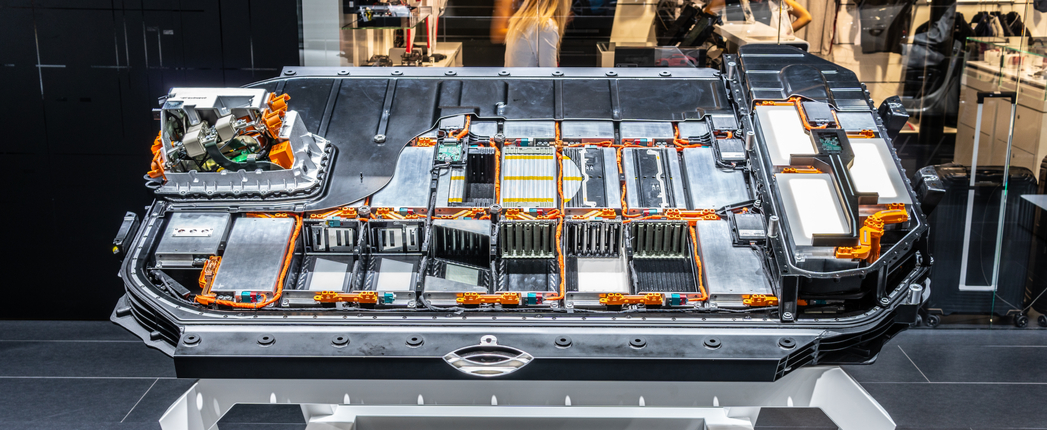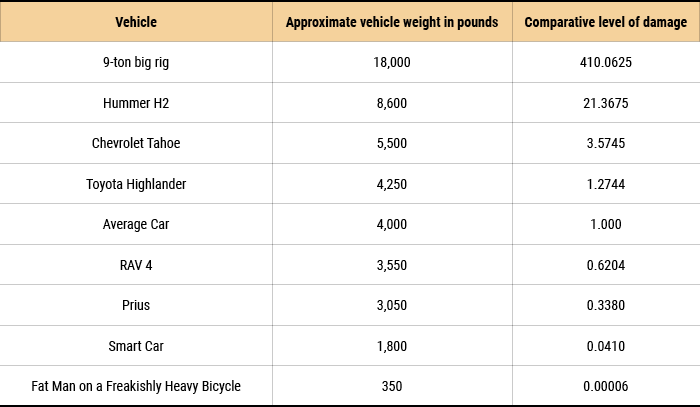
Electric vehicles, often viewed as a means of reducing pollution from gas-powered automobiles, have gained a small but growing share of the car and truck market. While they eliminate the tailpipe emissions from internal combustion engines, EVs come with their own set of issues that could affect other road users, pedestrians and the environment, one transport policy analyst says.
“Electric vehicles are heavy,” David Zipper, who studies urban policy and new mobility technologies, told Electric Vehicles InSite. “A Ford Lightning e-truck weighs 1,600 pounds more than a comparable F-150. That extra heft creates some serious problems.”
Annual EV sales have gone from virtually none in 2010 to 3.2 million units in 2020, which was about 5% of total car sales globally. This growth is expected to triple or quadruple by 2025, according to varying market forecasts.
Experts compare the “electric revolution” happening now to the internet revolution in the late 1990s and early 2000s, riding what technologists call the S-curve. When plotted on a graph, the S-curve shows that innovations experience a period of slow uptake when they are of interest to a limited number of people then enter a period of explosive growth as they disrupt the industry and existing businesses.
“EVs are on the shallow sloping bottom end of the S,” a recent BBC article said.
In the early-adoption phase, EV proponents have addressed some of the main obstacles, like range anxiety and lack of charging stations. Improvements in battery technology have achieved ranges above 400 miles in some vehicles, such as the Tesla Model S, and in Europe and Asia, if not the Unted States where zipper is based, infrastructure rollout is gathering pace.
These obstacles, while crucial in a large market such as the U.s., are not the only ones that could hinder mass adoption of the EVs, aside new regulations or taxes.
Zipper, a visiting fellow at the Harvard Kennedy School’s Taubman Center for State and Local Government and based in Washington D.C., said innovators must solve at least three more issues before the EV market can realistically pick up.
He thinks that EVs come with their own risks that can affect those outside the vehicle, and one of them is vehicle weight. Heavier objects impart more force upon impact, which is bad news for anyone walking, cycling or riding in a smaller vehicle who winds up in a collision with an EV.
However, the bestselling battery EVs in the United States – the Chevy Bolt, Tesla Model 3 and Tesla Model Y – weigh between 1.6 and 2 metric tons. This is close to similar-sized sedans and less than the many hundreds of thousands pickups sold every year.
In 2020, pickup trucks accounted for 20.1% of the new car market in the U.S., up from 18.3% in 2019, according to sales data from Motor Intelligence.
It is true that U.S. pedestrian and cyclist fatalities have been rising for years, and Zipper said heavy EVs will not help reverse that trend. According to a study from 2020 produced by the Governors Highway Safety Association, pedestrian fatalities on America’s roads increased by more than 20 percent since 2019, while deaths of people riding in cars, trucks and other vehicles remained essentially unchanged.
While fatalities have increased, it is unlikely to do with with vehicle type and more to do with speeding on unusually empty roads, mobile phone use and drink driving.
Zipper’s comments prompted heated online debate, with one commenter calling his remarks “surprisingly uninformed.”
Nick Augusteijn, a motoring journalist at Dutch news site NU.nl, told Electric Vehicles InSite that all modern vehicles are equipped with advanced driver-assistance systems designed to prevent such accidents. BEVs often have more safety equipment as standard, “to underscore that high-tech feel.” A new Dutch study proves that ADAS is effective, and it will be mandatory in the European Union starting from next year, he pointed out.
“Higher BEV sales should bode well for pedestrians, cyclists and drivers of smaller vehicles!” Augusteijn said.
According to Zipper, another issue is emissions. Tailpipe emissions from internal combustion engines grab the spotlight, but EVs are also sources of pollution, he said.
“The growing share of emissions from EVs comes from particles released through friction between tires and pavement,” Zipper said. “Heavier vehicles create more friction – and thus more emissions.”
Airborne particulate matter produced from the wearing down of brakes, tires and road surfaces, as well as the resuspension of road dust, also known as non-exhaust emissions, constitute a little-known but rising share of pollution from road traffic, according to a report by the Organization for Economic Cooperation and Development. The report underlines that these emissions can have significant negative impacts on public health and are expected to make up the majority of all particulate matter from road traffic as early as 2035.
“Our projections show that electric vehicle uptake in future years will not reduce non-exhaust emissions and may even increase them,” wrote the authors of the OECD report, which was published in December.
Only three of the 10 best-selling vehicles in the U.S. weigh less than BEVs such as the Model 3, Model Y and Bolt. Then there is the scale of sales numbers. The Ford F150, america’s favourite truck, sold some 750,000 units in 2020, whereas the Tesla Model 3 sold 95,000.
“Particle emissions are an issue, don’t get me wrong. But let’s be fair – what is real problem here? Heavy vehicles, an overwhelming majority of which are ICEs,” Augusteijn said.
BEVs hardly wear down brake pads since they mostly brake on the electric motor.
“Brake pads need replacing every 75,000 kilometers or so, but stories of BEVs still running with the original brake pads after 300,000 km are not uncommon,” he said.
Zipper’s third contention is that EVs contribute to more road damage, which rises exponentially with vehicle weight, meaning that heavier vehicles contribute to crumbling pavements, costing more money to repair.
“When looking at the entire vehicle park, be it in the U.S. or globally, ICE cars will outnumber BEVs for decades to come, even if they stop selling them tomorrow,” said Augusteijn.
Zipper argues that heavier battery packs intended to increase EV ranges translate into heavier vehicles and more road damage. Yet, it is higher energy density that increases range, which does not necessarily mean additional weight. Not everyone in the industry is convinced that ever larger battery packs are the way to go. Audi has indicated that it will fit smaller batteries, as charging speed will become more important as opposed to maximum range.
Zipper and Augusteijn do agree that whatever these costs are, they are unlikely to factor into a car buyer’s purchase decision.


Sorry, a technical error occurred and we were unable to log you into your account. We have emailed the problem to our team, and they are looking into the matter. You can reach us at cs@lubesngreases.com.
Click here link to homepage